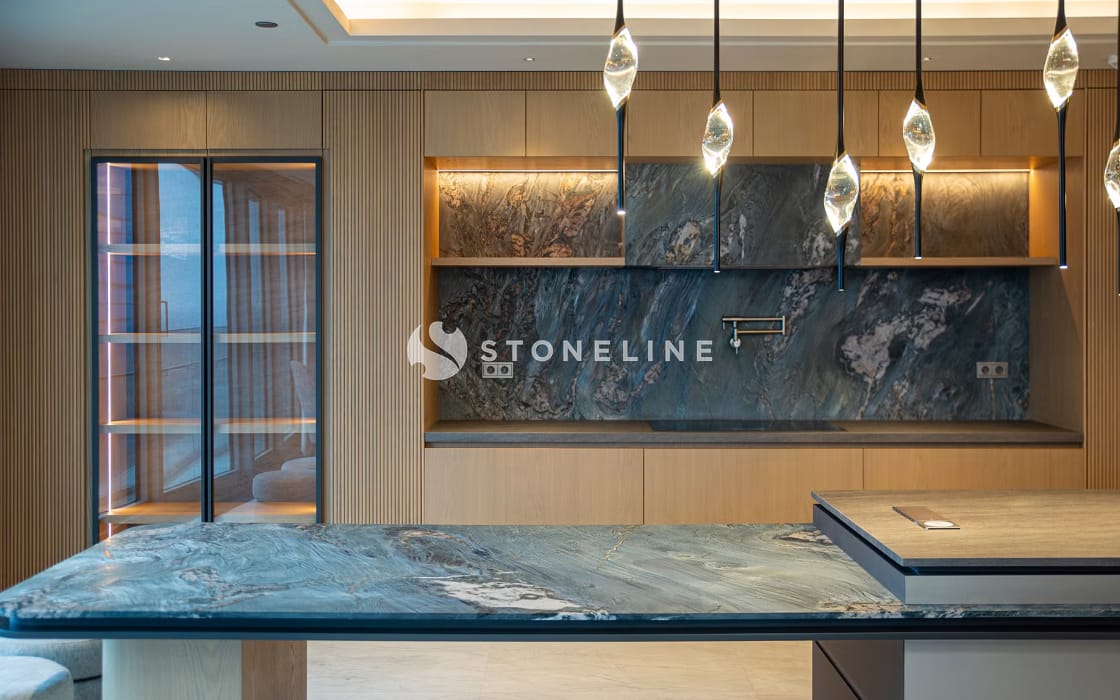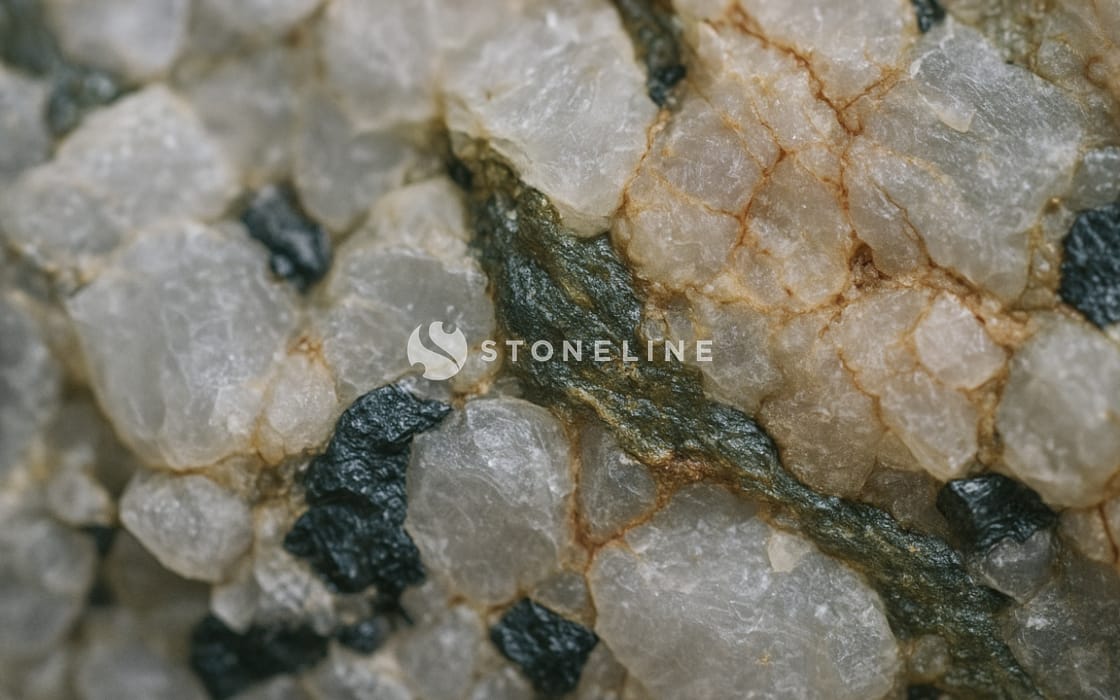
By the time you finish this article, you’ll understand how granite forms deep within the Earth’s crust, why it’s used across fields from architecture to high-precision instruments, and the surprising roles it plays—from carbon capture to supplying rare elements used in battery production. You’ll also discover how the weathering of granite shapes soils and why different cultures have long chosen this stone for enduring structures.
What Is Granite and How Does It Form?
Granite is an intrusive igneous rock that cools slowly beneath the Earth’s crust, giving it a coarse-grained texture. Its name comes from the Latin word granum, meaning “grain” (etymonline.com).
Typical mineral composition:
- Quartz (30–40%)
- Feldspar (50–60%)
- Secondary minerals like mica and amphibole
These minerals crystallize over millions of years as magma cools slowly, forming large rock bodies known as plutons (see Geology.com for detailed composition data).
Mineral Structure and Grain Size
You can infer granite’s origin from its grain size:
- Very coarse crystals (megacrysts >5 mm) indicate deep, slow cooling.
- Finer grains suggest a faster rise and cooling nearer the surface.
Where Is Granite Found and How Is It Extracted?
About 10% of the continental crust is made up of granite and similar rocks. It is especially abundant in major mountain ranges and massive batholiths, like those in the Sierra Nevada. Extraction from quarries involves drilling and controlled splitting to obtain large blocks with minimal waste.
Granite in Everyday Life: Countertops, Monuments, and More
With a Mohs hardness of 6–7 and high heat resistance, granite is widely used for kitchen countertops and flooring. Its ability to be polished makes it a preferred material for monuments. As a dimension stone, it is used globally for paving, facades, and building blocks.
Granite Surface Maintenance
- Apply a sealant every 1–2 years to close pores.
- Use pH-neutral cleaning products.
- Clean spills immediately, especially oils and acids like vinegar.
Granite’s Role in the Deep Carbon Cycle
Though granite is known for its durability, the feldspar and other silicate minerals it contains break down over geological time, reducing atmospheric CO₂. Slightly acidic rainwater reacts with these minerals to form bicarbonates, which are transported to oceans and stored in marine carbonates (IPCC AR6 Report).
Stat: Silicate weathering (including granite) removes around 0.25 gigatons of CO₂ per year from the atmosphere.
Granite Pegmatites: Reservoirs of Rare Elements
Some granite bodies evolve into pegmatites, ultra-coarse-grained rocks that harbor rare elements. Mining companies extract lithium, tantalum, and beryllium from these deposits—elements essential to products from smartphone batteries to nuclear reactors (BGS Lithium Data).
Impact on Soil and Ecosystems
When granite weathers, it breaks down into quartz-rich but nutrient-poor sand. This creates acidic, well-drained soils, ideal for acid-loving plants like blueberries, pines, and heathers. Farmers on granite terrains often need to apply lime and fertilizers to improve soil productivity.
Acoustic and Vibration-Dampening Properties
Granite’s density and elastic rigidity make it an ideal foundation for precision instruments. Coordinate measuring machines and optical benches are built on granite slabs to resist vibration and thermal expansion (Hexagon Products).
“Granite offers us an almost unmoving, stable platform.”
– Jane Johnson, Metrology Engineer
Granite in Art, Memory, and Meaning
Due to its slow weathering and symbolic resilience, granite has become a cultural emblem of permanence:
- Ancient Egyptians crafted obelisks from Aswan granite 3,000 years ago.
- The Vietnam Veterans Memorial uses black granite to create a solemn space of remembrance.
Its symbolism of defiance against time and role in preserving memory make granite a shared cultural icon.
Standing on Solid Ground
You now know granite’s journey—from molten depths to kitchen countertops, from carbon cycles to rare element mining, and from shaping soils to supporting precision machinery. The next time you admire a polished granite surface or pass by a monument, you’ll recognize how this grainy rock has helped shape both our planet and our lives.
 Stoneline
Stoneline














